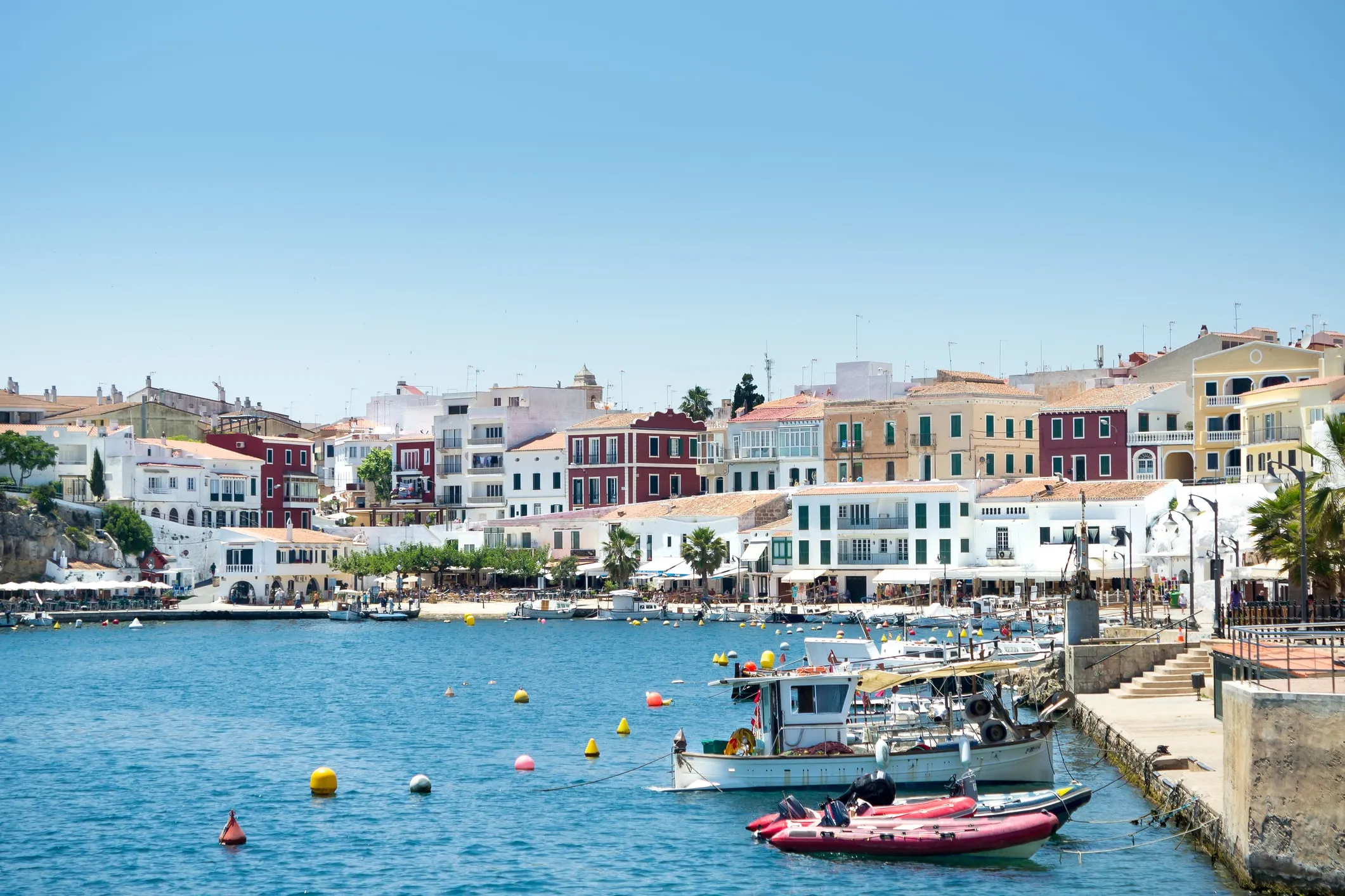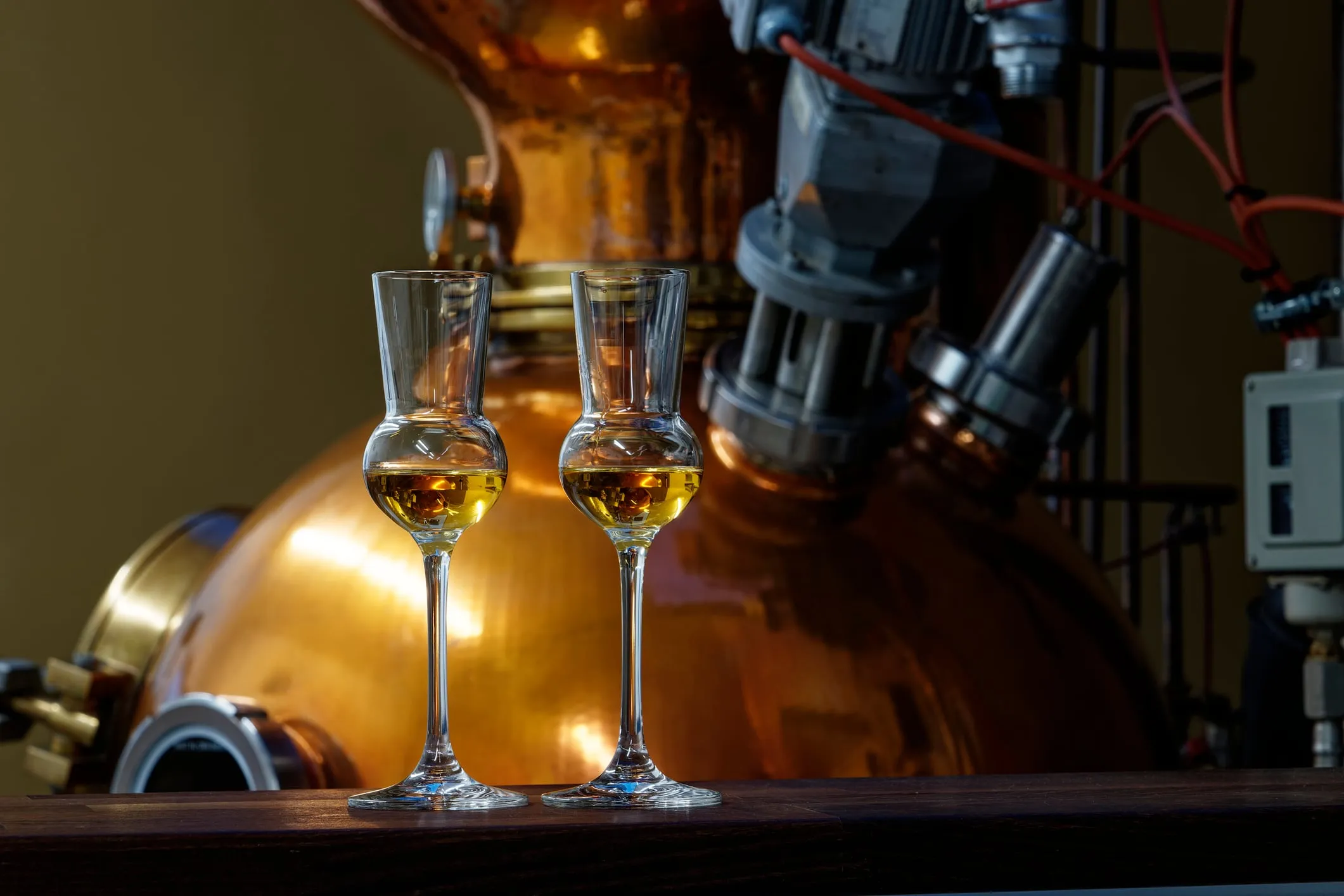The morning ferry from Palma slides past the 18th-century fortress of La Mola at 7:23am, revealing Europe’s longest natural harbor stretching 6 kilometers into Menorca’s eastern coast. From the upper deck, you can smell wild rosemary mixing with diesel fumes as fishing boats return with the dawn catch, their holds full of red prawns that will sell for €38 per kilo at the Mercat del Claustre by 9am.
This is Mahón – or Maó in Catalan – where British naval officers once sipped gin punch in the same waterfront bars where German yacht crews now order €2 pomadas. The capital of Menorca wears its 300 years of colonial swapping between Britain, France, and Spain like geological layers, each empire leaving architectural evidence in limestone and mahón cheese.
The Harbor That Launched a Thousand Gins
Understanding Mahón’s Strategic Geography
The harbor isn’t just long – it’s a flooded canyon that cuts so deep into the island that Admiral Nelson called it “the finest port in the Mediterranean.” Standing at the Mirador de Miranda at sunset, you understand why empires fought over this water. The natural protection from winter storms, the depth that accommodates cruise ships, the narrow entrance that two cannons could defend – geography determined Mahón’s destiny.
The Three Harbors Within the Harbor
- Cala Figuera: The old fishing quarter where boats still mend nets at 6am
- Es Castell: The British-built garrison town with Georgian squares
- Port de Maó: The commercial heart where ferries dock beside gin distilleries
The best €5 you’ll spend is on the yellow harbor boat that chugs between these points every hour from 10am to sunset, narrated by Captain Joan who switches between Catalan, Spanish, English, and German depending on his audience.

Mahón harbor at sunrise from La Mola: Europe’s longest natural harbor stretches 6 kilometers inland. Nelson called it “the finest port in the Mediterranean” – the British then lost it to Spain.
La Mola Fortress: The Gibraltar That Never Was
The Fortress Experience
€8 entry • Open 10am-8pm summer, 10am-2pm winter
The British built La Mola between 1848-1875, spending what would be €500 million today on a fortress that never fired a shot in anger. The taxi from town costs €15 and saves you a 45-minute uphill walk that leaves most visitors drenched in sweat by 10am.
Inside the fortress, ten kilometers of underground galleries stay at 18°C year-round. The guided tour at 11am (€3 extra) takes you through ammunition stores that could hold 600 tons of gunpowder, cisterns collecting 1 million liters of rainwater, and prison cells where Republican soldiers spent the Spanish Civil War counting limestone blocks.
Local Secret: The fortress café serves the island’s best gin-tonic for €8 using Xoriguer gin and Mediterranean tonic with juniper berries. The terrace view spans from Mallorca to the Algerian coast on clear winter mornings.
The Old Town: Georgian Meets Mediterranean
From Plaça Espanya to the Gin Distillery
The old town climbs from sea level to 70 meters in a series of narrow streets that the British widened just enough for a horse cart but not enough for modern delivery vans. Start at Plaça Espanya at 9am when the coffee costs €1.40 and locals still outnumber tourists 3:1.
The Gin Heritage Trail
Self-guided • 90 minutes • Free
Follow Carrer Hannover (yes, named after the British royal house) to reach Xoriguer Distillery, where gin has been made the same way since 1798. The €3 tour includes three tastings, though the real education comes from watching Miguel hand-label bottles while explaining why juniper berries must be picked during the waning moon.
The Pomada Phenomenon
- Traditional recipe: 1 part Xoriguer gin, 2 parts cloudy lemonade
- Local price: €2-4 depending on tourist proximity
- Best spot: Bar La Minerva where fishermen drink at 7am
- Tourist trap: Any place advertising “Pomada Parties”

Xoriguer Distillery: Copper stills from 1798 still produce gin using juniper berries picked during the waning moon. The €3 tour includes three tastings; the education from Miguel’s stories is priceless.
Mercat del Claustre: Where Locals Shop
Tuesday-Saturday 7am-2pm
The covered market occupies a former Carmelite convent where monks once prayed and now vendors sell Mahón cheese at €22 per kilo. The cheese – protected by denomination of origin like champagne – must be aged in the natural caves around Alaior, developing its characteristic orange rind from being rubbed with paprika and oil.
Market Navigation
- Ground floor: Fish (expensive), meat (reasonable), flowers (Friday only)
- Upper floor: Vegetables, cheese, sobrassada at €14/kg
- Best stall: Cas Sogre for 18-month aged Mahón (free tastings)
- Hidden gem: Juan’s olive stand with 14 varieties from €3/kg
The British Quarter: Es Castell
The Most British Town in Spain
10 minutes by bus • €2 from Mahón
Es Castell (formerly Georgetown after King George III) remains stubbornly, charmingly British 200 years after the redcoats left. The Calesfonts harbor forms a perfect square because British military engineers didn’t trust nature’s curves. Georgian terraces painted regulation naval blue frame the water where sailing dinghies cost €40 per half-day.
Fort Marlborough: The Underground Marvel
€4 entry • Guided tours hourly
This 18th-century fort dug into solid rock protected the harbor’s south entrance. The tour includes an audiovisual show projected onto cave walls, though the real drama is the ventilation system that kept 300 soldiers breathing 20 meters underground using only chimney convection.
Evening Ritual at Calesfonts
- 5pm: Sailing school returns (watch kids capsize gracefully)
- 7pm: First sundowner crowd arrives
- 8:30pm: Restaurants set tables onto the quayside
- 10pm: Live music at selected bars (Wednesday/Saturday)
- Midnight: Last bus to Mahón (don’t miss it)
Practical Intelligence
Getting Here
From Palma de Mallorca
- Ferry: €49-89, 6 hours overnight or 2 hours fast catamaran
- Flight: €45-200, 35 minutes, 4 daily
From Barcelona
- Ferry: €55-120, 7-8 hours overnight
- Flight: €30-180, 1 hour, 8 daily summer
From Ciutadella (Menorca’s other city):
- Bus: €5.50, 45 minutes, hourly 7am-10pm
- Taxi: €45-50, 35 minutes
- Rental car: €35/day plus €20 petrol
Where to Stay
Port Area
€60-150/night • Walking distance to everything
Hotel Port Mahón Av. Fort de l'Eau, 13 – Colonial-style overlooking harbor, breakfast terrace catches sunrise over fortress. €110/night.
Hostal Jume Carrer de la Concepció, 6 – Family-run since 1958, basic but spotless, owner Maria makes traditional Menorcan breakfast. €65/night.
Historic Center
€80-200/night • Quiet nights, steep walks
Casa Alberti Carrer d'Isabel II, 9 – Boutique in 18th-century mansion, six rooms only, gin library with 48 varieties. €140/night.
Reality check: August books solid by March. Cruise ship days (Tuesday/Thursday) spike restaurant prices 20%.
Where to Eat
Traditional Menorcan
Es Moli de Foc Carrer de Sant Llorenç, 65
Converted windmill where locals celebrate birthdays. Caldereta de langosta €85 for two (order 24 hours ahead). The €16 menu del dia includes wine.
Sa Gavina Moll de Llevant, 306
Fishermen’s haunt since 1936. Whatever they caught that morning for €14-22. No menu, Rosa tells you what’s good.
Modern Updates
Nonna Moll de Ponent, 17
Italian-Menorcan fusion that shouldn’t work but does. Sobrassada pizza with Mahón cheese €14. Harbor terrace books a week ahead.
Budget Authentic
Bar La Minerva Moll de Ponent, 11
Pomada €2.50, tapas €3-6, fishermen’s breakfast €5. Unchanged since 1947 except for the Wi-Fi password.
The Mahón Day Planner
Early Morning (7-10am)
- Coffee at Plaça Espanya watching lawyers rush to court
- Market shopping with locals at Mercat del Claustre
- Quiet fortress visit before tour buses arrive
Midday (11am-3pm)
- Gin distillery tour when it’s too hot for walking
- Long lunch at harbor restaurant
- Siesta like everyone else
Late Afternoon (4-7pm)
- Harbor boat tour in golden light
- Es Castell exploration
- Sunset gin-tonic at La Mola fortress
Evening (8pm-midnight)
- Tapas crawl through old town
- Live music at Calesfonts (summer weekends)
- Late pomada at Bar La Minerva
Money Matters
Daily Budget Breakdown
- Accommodation: €60-150
- Meals: €25-40 (or €15 self-catering)
- Transport: €5-15
- Attractions: €10-20
- Drinks: €10-20
Free Activities
- Walking the entire harbor (3 hours)
- Sunset from Miranda viewpoint
- Es Castell’s Georgian architecture
- Market browsing (tasting encouraged)
- Beach at Cala Mesquida (bus €2.50)
Seasonal Realities
Summer (June-September): Cruise ships Tuesday/Thursday. Restaurants extend hours. Everything open but everything crowded. Harbor gets sewage smell during heat waves.
Winter (November-March): Half the restaurants close. Fortress reduces hours. Weather perfect for walking. Gin tastes better in the cold.
Sweet Spots: May when wildflowers bloom. October when locals reclaim their town.
Beyond Tourist Mahón
The Immigrant Quarter of Sant Antoni
Behind the tourist harbor, Sant Antoni neighborhood houses Menorca’s immigrant community. The Moroccan bakery on Carrer de Sant Antoni sells msemen flatbread for €1. The Senegalese restaurant hidden on Carrer del Sol serves thieboudienne for €8. This is where kitchen staff and hotel cleaners live, where rent stays under €600/month, where you hear Arabic and Wolof mixing with Catalan.
The British Cemetery
Ten minutes walk past the hospital, the Protestant cemetery holds 200 years of British dead. Naval officers, merchants’ wives, children who didn’t survive Mediterranean summers. The caretaker, whose great-grandfather dug these graves, opens the gate weekday mornings and shares stories if you speak slowly in Spanish.
The Abandoned Quarries
The sandstone quarries that built Mahón now fill with emerald water. S’Hostal Quarry, 20 minutes walk from town, became an illegal swimming hole where local teenagers dare each other to jump from 10-meter ledges. The official signs say “Prohibido” but the worn path suggests otherwise.
Navigation Essentials
Getting Around
On Foot: Old town to harbor = 10 minutes downhill, 20 minutes up Bus: €2 anywhere in town, exact change only Taxi: €8-12 anywhere in Mahón, €45 to airport Boat: €5 harbor tour, €15 to beach calas
Critical Local Knowledge
- Mahón vs Maó: Use Maó with anyone under 40
- Siesta is real: 2-5pm everything closes except tourist traps
- Market days: Tuesday/Saturday for Mercat del Claustre
- Pharmacy rotation: Posted on every pharmacy door
- Free Wi-Fi: Library, port area, most cafés
- Public toilets: Market, bus station, port (€0.50)
Final Intelligence
Mahón reveals itself slowly. The first day you see tourist services layered over a fishing port. The second day you notice British street layouts fighting Mediterranean chaos. By the third day, you’re drinking pomada at 11am with retired fishermen, understanding their Menorquí dialect through context and gin, realizing this strange hybrid city makes perfect sense once you stop trying to categorize it.
The secret to Mahón isn’t choosing between its identities – British garrison, Spanish capital, Catalan stronghold, tourist gateway. It’s understanding that this harbor town profits from its contradictions, selling gin-soaked history to cruise passengers while maintaining squid fishing boats, running Instagram-ready gin bars beside working-class pomada joints, preserving Georgian squares while building apartment blocks.
Come for the fortress and gin. Stay for the morning when mist rises off the harbor and church bells argue with the mosque’s call to prayer, when fishermen mend nets beside yacht crews, when you realize Mahón’s magic isn’t despite its multiple personalities but because of them.
